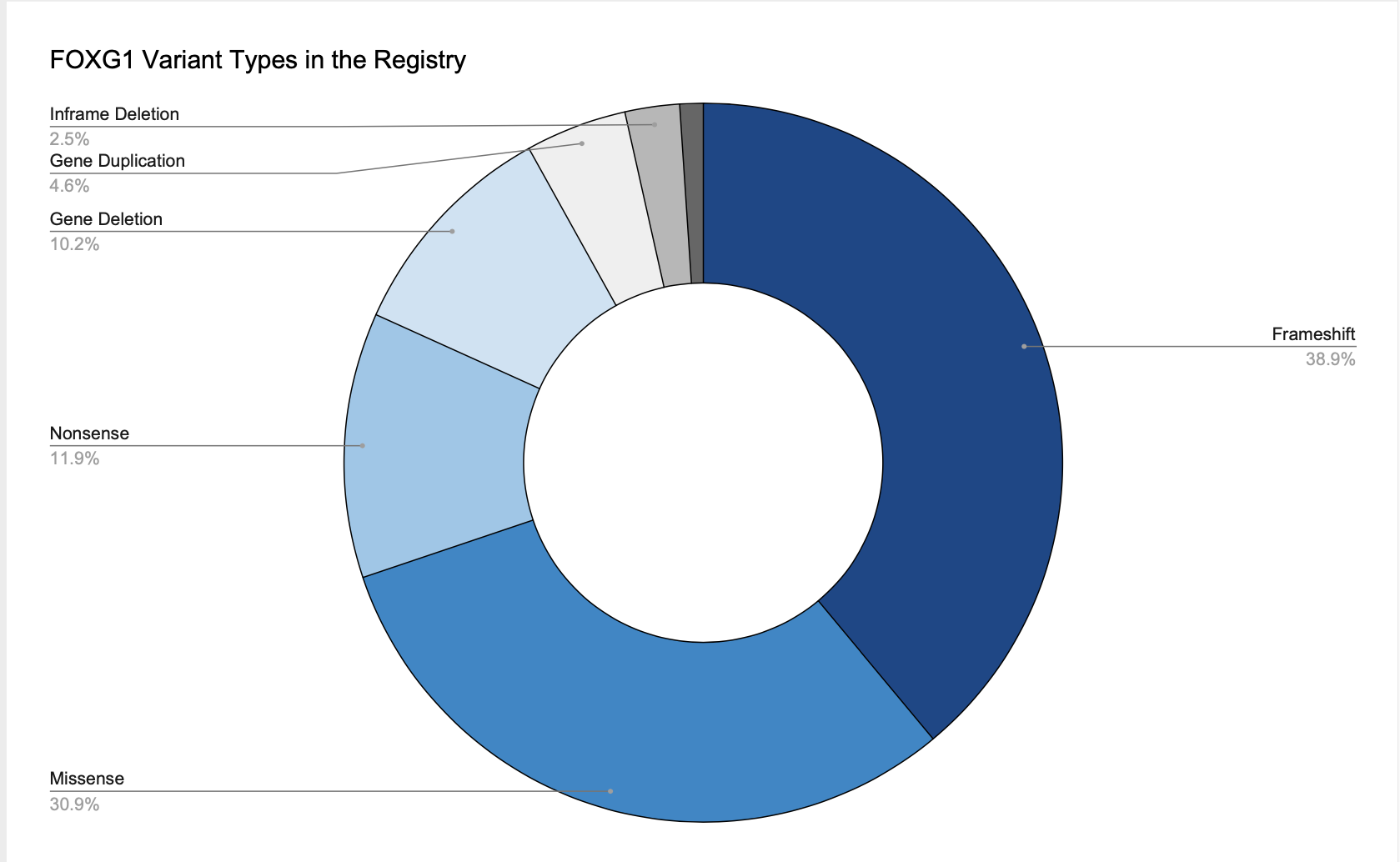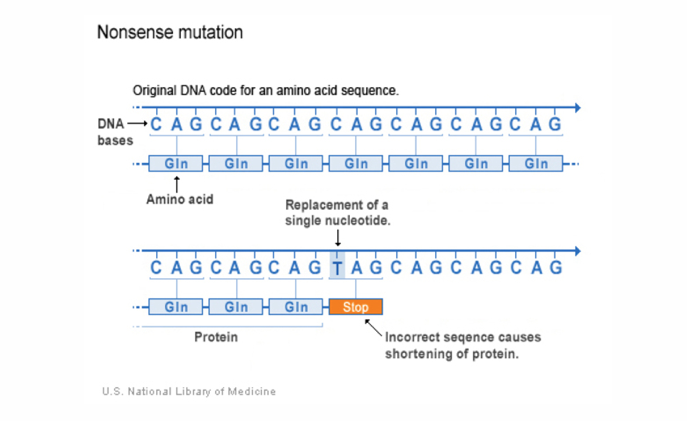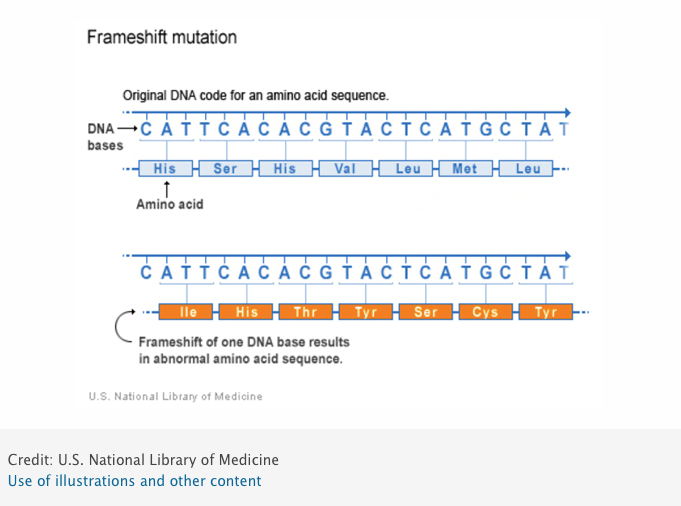
What is FOXG1 Syndrome?
History of FOXG1 Syndrome
FOXG1 syndrome is named after the FOXG1 gene (Forkhead Box G1), a critical gene involved in early brain development, particularly in the formation of the cerebral hemispheres. The FOXG1 gene belongs to a family of transcription factors known as the Forkhead box (FOX) genes, which help regulate the expression of other genes during embryonic development.
Originally discovered in the early 1990s, FOXG1 was first referred to as Brain Factor 1 (BF-1) due to its role in brain formation. It was later renamed FOXG1 as part of standardized gene nomenclature.
The condition now known as FOXG1 syndrome was first linked to a disruption in the FOXG1 gene in a 2005 publication by Shoichet et al., which described a child with severe developmental delay and brain abnormalities. In 2008, further studies—including a paper by Ariani et al.—identified additional children with mutations in the FOXG1 gene, initially classifying it as a congenital variant of Rett syndrome due to clinical similarities.
However, as more data emerged, it became clear that mutations in FOXG1 caused a distinct neurodevelopmental disorder with unique features. In 2011, researcher Kortüm et al. formally proposed the name “FOXG1 syndrome” to define this condition as a separate diagnosis—establishing it as its own recognized disorder in the medical and scientific communities.
Diagnostic Advancements
In recent years, FOXG1 syndrome has been increasingly recognized in clinical settings, partly due to its inclusion in genetic testing panels. The FOXG1 gene is now part of many epilepsy and microcephaly genetic panels, facilitating earlier and more accurate diagnoses for affected individuals. This advancement has been instrumental in identifying more patients and providing them with appropriate care and resources .
Find the FOXG1 Syndrome ‘Gene Review’ in the NIH National Library of Medicine HERE
What is FOXG1 Syndrome?
FOXG1 syndrome is a rare genetic neurodevelopmental disorder caused by a mutation in the FOXG1 gene. FOXG1 gene is one of the first and most important genes for early brain development and when impaired, causes developmental disabilities as well as medical complexities, including epilepsy.
Every child born with FOXG1 syndrome is unique as FOXG1 manifests as a spectrum where symptoms and severity vary between individuals. Our patient data shows characteristics of children with FOXG1 syndrome include: non-speaking, non-ambulatory, experience seizures, feeding problems, cortical vision impairment, movement disorders, and developmental delays. Less-severely-affected FOXG1 children often present with (ASD) Autism Spectrum Disorder as FOXG1 is an autism related gene. FOXG1 syndrome is found equally among both females and males and is geographically more prevalent where diagnostic testing is more advanced.
*The FOXG1 Patient Registry and FOXG1 Natural History Study are the validated sources of FOXG1 syndrome patient data. If you or someone you know was diagnosed with FOXG1 syndrome, please make sure they are registered and enrolled.
How Common is FOXG1 Syndrome?
There are about 1500 known* patients diagnosed with FOXG1 syndrome worldwide, with the diagnosis rate climbing steadily year-over-year (*as of November 1, 2025).
The incidence rate of FOXG1 syndrome is estimated 1 : 30,000 (*see details are in supplementary information)
A new epidemiology paper conducted by FOXG1 Research Foundation advisory team member Karen Malone, indicates significantly higher numbers.
What is FOXG1 syndrome? Heather Olson, MD, MS, Neurologist at Boston Children’s and Neurology Instructor at Harvard Medical explains.
FOXG1 Syndrome Natural History Study Publication is the most comprehensive data on FOXG1 syndrome to-date.
What Causes FOXG1 Syndrome?
FOXG1 syndrome is typically a "de novo" (spontaneous, non-inherited) mutation that occurs in one of the two copies of the FOXG1 gene. This means that patients express one healthy copy and one mutated copy or variant. There are multiple variants of the gene reported in patients that affect individuals differently along the spectrum of severity.
The mutations (or variants) that occur in the FOXG1 gene and cause FOXG1 Syndrome include frameshift, missense, nonsense, duplication, and deletions. Usually, the earlier a mutation occurs along the sequence of the FOXG1 gene, the more severe is the manifestation of the disorder. Missense mutations have only been detected in the forkhead DNA binding sequence and typically result in milder characteristics of FOXG1 syndrome.
What does the FOXG1 gene do?
The FOXG1 (forkhead-box G1) gene, also called Brain factor 1, is one of the first genes that is switched on in the developing brain to regulate brain development and function.
FOXG1 syndrome is caused by one singular gene - FOXG1
FOXG1 is a small gene made up of a single exon
FOXG1 gene is a transcription factor that regulates the turning on or off of other genes
FOXG1 has been linked to conditions like autism, Alzheimer’s, and schizophrenia, suggesting that therapy development may be transferable to more common disorders.
The FOXG1 gene encodes for a transcription factor, which is a type of protein that has the ability to bind DNA to “turn on or off” many other genes. Proteins are the building blocks of cells, while DNA and mRNA are the scripts from which proteins are made. Hence, FOXG1 instructs cells to produce a specific set of proteins in cells by turning on or off other genes. Many of the proteins that FOXG1 regulates are important for cellular connectivity and communication.
The FOXG1 gene is primarily present in the developing human brain, and a few other restricted sites outside of the brain, such as the developing eye, the nose, the ears, the pituitary, and the gut.
The FOXG1 gene acts early in fetal development and is particularly important for the development of the frontal areas of the brain (the cortex, the hippocampus, and the striatum). FOXG1 is important for the production of correct cell numbers and cell types during brain development. It is also important for the establishment of connections between different brain parts, such as the left and the right hemispheres and the connections between frontal areas with the back of the brain. The connection between the left and the right frontal hemispheres is established through a nerve fiber tract called the corpus callosum, also referred to as a “white matter” tract. The corpus callosum is often disrupted in FOXG1 Syndrome patients (agenesis of the corpus callosum). Finally, FOXG1 is important for the survival of certain cells in the brain at later stages. Because of its importance in regulating cell numbers and cell survival, loss of one copy of FOXG1 can lead to microcephaly and reduced folds in the cortex, which in humans is a highly folded brain structure.
The FOXG1 Protein tells our brain what to do.
When a child’s FOXG1 gene is missing, spelled wrong (altered), or duplicated it impacts brain development.
What are FOXG1 Signs and Symptoms?
Depending on the mutation type, FOXG1 syndrome manifests differently along the spectrum of symptoms and severity. In most cases, features of FOXG1 syndrome appear early in life and can evolve with age.
Neurological symptoms of FOXG1 syndrome
Epilepsy / seizures / infantile spasms
Movement disorders (i.e. involuntary movements)
Cortical Vision Impairment (CVI)
Agenesis of the corpus callosum (inhibiting communication from left and right side of the brain)
Microcephaly (small head size)
Developmental symptoms of FOXG1 syndrome
Global developmental delays
Gross motor delays or disabilities
(i.e. difficulty or inability to sit or walk)
Fine motor delays or disabilities, (i.e. difficulty using hands purposefully)
Speech and language delays or disabilities
Autism spectrum disorders (ASD)
Challenges with daily living skills (i.e. dressing, eating, toilet training)
Physical symptoms of FOXG1 syndrome
Scoliosis
Crossed eyes (also called strabismus)
Irritability and excessive crying
Respiratory issues, neuromuscular respiratory weakness
Feeding problems; aspiration
Gastroesophageal reflux (GERD)
Constipation
Difficulty falling or staying asleep
Sensory Processing Disorder (SPD)
Meet the beautiful children with FOXG1 Syndrome
How is FOXG1 Syndrome Treated?
Supportive therapies are available to help manage symptoms of FOXG1 syndrome. Depending on symptoms, these can include medications, nutritional support, surgeries, developmental therapies, and assistive devices (including augmentative and alternative communication strategies).
To manage care, FOXG1 patient’s care teams may include experts from a variety of specialties, including: neurology, epilepsy, genetics, gastroenterology, pulmonology, physiatry, ophthalmology or optometry, and developmental therapists. Medications to treat symptoms of FOXG1 syndrome include anti-epilepsy and reflux drugs. As part of care, children with FOXG1 syndrome often see therapists for physical, occupational, vision, and speech therapy.
Some children’s hospitals support multidisciplinary clinics to provide expert care to individuals with Rett Syndrome and related disorders, which include FOXG1 syndrome. FOXG1 clinical centers of excellence include: Boston Children’s Hospital, Colorado Children’s Hospital, Children’s Hospital of Philadelphia, and Hôpital Necker in France.
Parents who receive a new diagnosis of FOXG1 syndrome, please see our Newly Diagnosed page under the Parents and Caregivers area here.
How is FOXG1 Tested and Diagnosed?
Since the signs and symptoms of FOXG1 syndrome are common with many neurological disorders, a genetic sequencing test is needed. This is done through a blood draw. Your neurologist, geneticist or pediatrician should be able to submit your child's blood sample to genetic testing companies like Invitae, GeneDx and Baylor College (to name a few). The FOXG1 gene is on most epilepsy and microcephaly genetic panels. An MRI scan of the brain is important too.
Is There a Cure for FOXG1 Syndrome?
Currently, there is no cure for FOXG1 syndrome. There are no approved therapeutics for FOXG1 syndrome, yet. There is a high unmet need, which is common in the rare disease neurological space.
The FOXG1 Research Foundation is working swiftly along the roadmap to bring a FOXG1 AAV9 gene replacement therapy into patient clinical trails in 2026. This will be the first-ever treatment for FOXG1 syndrome. The Foundation has extensive genetic research underway (see research projects) to continue to find therapeutics to alleviate the symptoms that are specific to FOXG1 patients.
The deep data from the digital FOXG1 Citizen Natural History Study informs researchers about the symptoms and experiences of FOXG1 patients, providing true clinical end points for trials.
What is the FOXG1 Syndrome Life Expectancy?
There is no current data determining the life expectancy for individuals with FOXG1 syndrome. The FOXG1 Patient Registry and Citizen Natural History Study will help inform the life expectancy answer, although the goal of the FOXG1 Research Foundation is to find therapeutics to give all individuals with FOXG1 syndrome a full life expectancy.
What are the FOXG1 Mutation Types?
Various mutations within the FOXG1 gene have been identified in people with FOXG1 syndrome. The condition can also result from a deletion of genetic material from a region of the long (q) arm of chromosome 14 that includes the FOXG1 gene and several neighboring genes. All of these genetic changes prevent the production of forkhead box G1 or impair the protein's function. A shortage of this protein disrupts normal brain development starting before birth, which appears to underlie the brain malformations and severe developmental problems characteristic of FOXG1 syndrome
The type of gene mutations have varying effects on brain development and health, depending on where they occur and whether they alter the function of essential proteins.
The various FOXG1 mutations reported in the FOXG1 Patient Registry include:
· FOXG1 Missense Mutation
· FOXG1 Nonsense Mutation
· FOXG1 Deletion Mutation
· FOXG1 Duplication Mutation
· FOXG1 Frameshift Mutation
Source: FOXG1 Syndrome Patient Registry
FOXG1 Mutations Explained
FOXG1 Missense Mutation
This type of mutation is a change in one DNA base pair that results in the substitution of one amino acid for another in the protein made by a gene.
FOXG1 Nonsense Mutation
A nonsense mutation is also a change in one DNA base pair. Instead of substituting one amino acid for another, however, the altered DNA sequence prematurely signals the cell to stop building a protein. This type of mutation results in a shortened protein that may function improperly or not at all. A nonsense mutation causes a Premature Termination Codon (PTC) also known as a Stop Codon. About 30% of patients with FOXG1 syndrome are reported to have a Nonsense mutation.
FOXG1 Deletion
A deletion changes the number of DNA bases by removing a piece of DNA. Small deletions may remove one or a few base pairs within a gene, while larger deletions can remove an entire gene or several neighboring genes. The deleted DNA may alter the function of the resulting protein(s). Deletions including cis-acting regulatory elements, but not coding region result in a FOXG1 syndrome phenotype.
FOXG1 Duplication
A duplication consists of a piece of DNA that is abnormally copied one or more times. This type of mutation may alter the function of the resulting protein.
FOXG1 Frameshift Mutation
This type of mutation occurs when the addition or loss of DNA bases changes a gene's reading frame. A reading frame consists of groups of 3 bases that each code for one amino acid. A frameshift mutation shifts the grouping of these bases and changes the code for amino acids. The resulting protein is usually nonfunctional. Insertions, deletions, and duplications can all be frameshift mutations.
How Can FOXG1 Research Help Treat Other Brain Disorders?
Scientists have found links between FOXG1 and common neurodevelopmental disorders including Autism Spectrum Disorder (ASD), schizophrenia, in cancers such as medulloblastoma and glioblastoma, and also in neurodegenerative conditions such as Alzheimer’s disease.
FOXG1 is one of many rare genetic intractable epilepsy also known as developmental and epileptic encephalopathies. Scientists believe the study of the fundamental biology of the FOXG1 gene can help to better understand and treat these conditions.
FOXG1 is linked to common neurodevelopmental disorders including: autism, schizophrenia, epilepsy, and Alzheimer’s disease.
AUTISM SPECTRUM DISORDERS
1 in every 100 children are diagnosed with autism spectrum disorder (ASD).
∼1 in 44 children has been identified with ASD in the United States.
Autism prevalence has increased 178% since 2000.
FOXG1 could be a viable drug target for ASD
Elevated FOXG1 levels found in a subset of severe ASD patients
FOXG1 gene dose associated with ASD diagnosis
15-34% of ASDs thought to be caused by a single genetic disorder
iPSC neurons cultured from patients with ASD have increased FOXG1 levels
Patients with greater head size, and more severe ASD symptoms, appear to have higher level of FOXG1 expression in iPSC-derived organoids
FOXG1 mouse models are ideal models for autism research
SCHIZOPHRENIA
∼ 24 million people or 1 in 300 people (0.32%) worldwide are diagnosed with Schizophrenia
A schizophrenia-associated loci was shown to physically interact with and regulate FOXG1 expression
Expression of schizophrenia-associated gene, GRID1, found to be significantly elevated in FOXG1 patient-derived iPSC neurons and Foxg1+/- fetal mouse brainFunctional/regulatory elements in FOXG1
EPILEPSY:
∼ 65 million have epilepsy globally.
∼ 1 in 26 people will develop epilepsy at some point during their lifetime
∼3.4 million people in the United States have epilepsy; 1.2% of the population
∼ 87% of individuals with a FOXG1 mutation are diagnosed with epilepsy
The first clinical trial for FOXG1 syndrome is for an anti-epileptic drug (AED)
ALZHEIMER’S DISEASE:
∼44 million people have Alzheimer’s or a related dementia worldwide
FOXG1 is one of the five genes that play a key role in development of the human neocortex and hippocampus projection neurons that are severely degenerated in Alzheimer’s brains
References:
Yale News: FOXG1 may play a critical role in the development of autism
Key Papers about FOXG1 Syndrome
Understanding Your Child’s Genetics Report
Subscribe to the FOXG1 Research Foundation YouTube Channel
FOXG1 Syndrome Citizen Natural History Study
Newly Diagnosed Page for FOXG1 Parents
CheckRare Video What is FOXG1 syndrome? Heather Olson, MD, MS, Neurologist at Boston Children’s and Neurology Instructor at Harvard Medical explains.
Spelling Key: FOXG1 - the protein in humans and mouse models | FOXG1 and Foxg1 in italics- refer to the gene in humans and animal models , respectively. source: NIH National Library of Medicine













